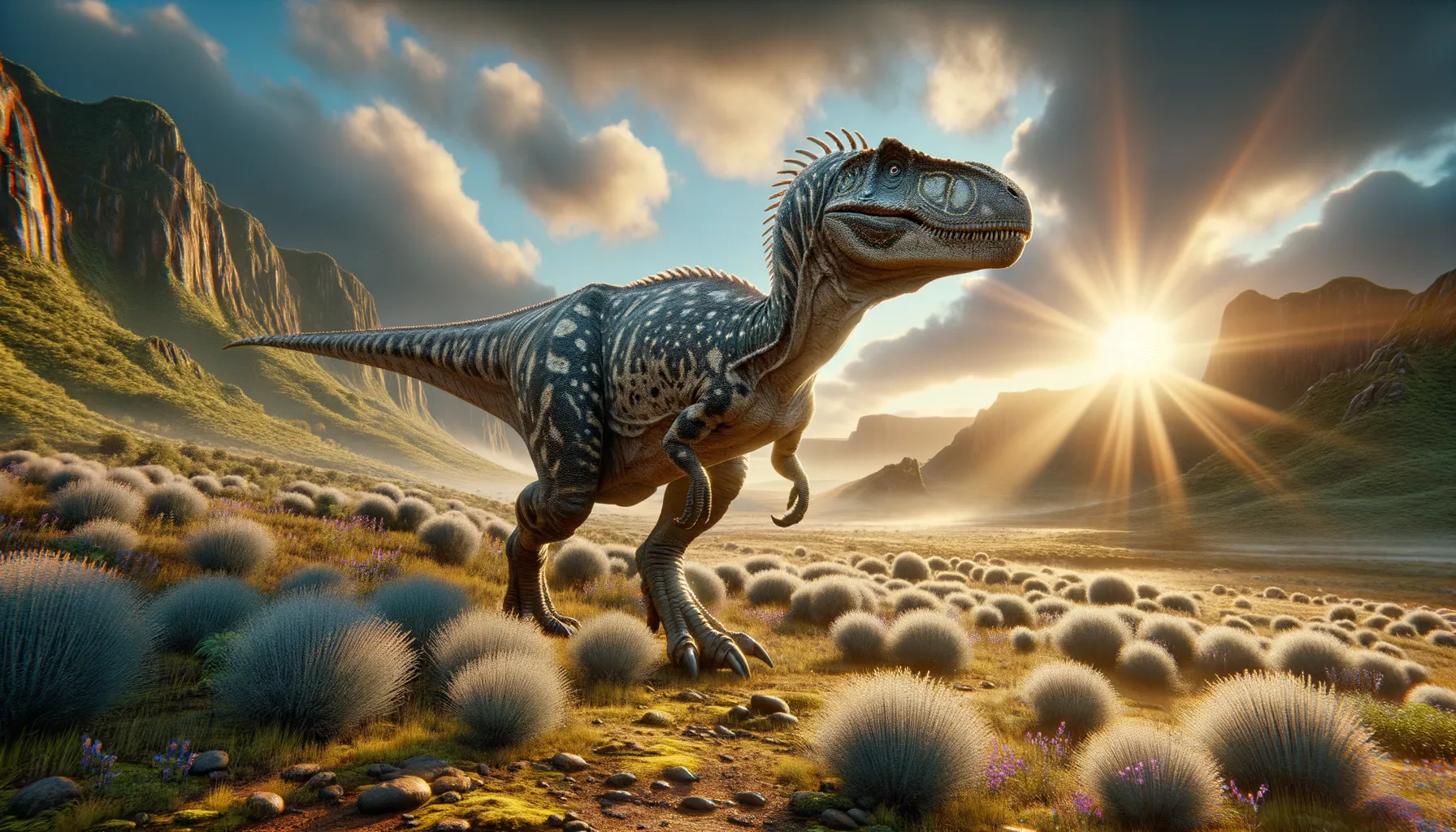
Tugulusaurus
Swift runner of the ancient Cretaceous lands.
Period
Cretaceous
Length
Roughly 3 meters (10 feet) long.
Height
Around 1.5 meters (4.9 feet) tall.
Weight
Approximately 50 kilograms (110 pounds).
Tugulusaurus was a nimble theropod dinosaur from the Early Cretaceous period, primarily recognized for its swift movements and adaptability. Known from fossil remains found in northwestern China, it provides key insights into the evolutionary path of theropods. Its relatively light frame and potential for bipedal locomotion suggest it might have been a fast predator or scavenger, adept at navigating its environment.
Diet
Tugulusaurus likely had a carnivorous diet, feeding on smaller animals and possibly scavenging when available. Its physical build suggests it was well-suited to catching prey quickly and efficiently.
Hunting
With its agility, Tugulusaurus could have hunted alone, relying on speed to surprise and capture prey. It may have utilized stealth and quick bursts of energy to catch smaller dinosaurs or other contemporary vertebrates.
Environmental challenges
Tugulusaurus lived in a period of significant environmental change, with varying climates influencing its habitat. It would have needed to adapt to potential shifts in available prey and vegetation. Predatory threats from other larger theropods might have also been a consistent challenge in its ecosystem, pushing it to be a cautious and agile survivor.
Speed
Moderately fast, capable of quick sprints.
Lifespan
Estimated to live around 10 to 20 years.
First discovery
Discovered in the Tugulu Group of China in 1973.
Fun Facts
- Tugulusaurus is a lesser-known dinosaur that lived during the Early Cretaceous period.
- Its name means 'Tugulu lizard,' named after the Tugulu Group, a geological formation in China where its remains were found.
- Tugulusaurus is believed to have been a bipedal dinosaur, meaning it likely walked on two legs.
- It belonged to the theropod group, which also includes famous dinosaurs like Tyrannosaurus rex and velociraptors.
- The fossils of Tugulusaurus were discovered in the Xinjiang region of China.
- Although not much is known about Tugulusaurus, it provides valuable information about the diversity of dinosaurs in the Early Cretaceous period.
- Tugulusaurus was likely a small and agile predator, possibly feeding on insects and small animals.
Growth and Development
Tugulusaurus likely experienced a relatively rapid growth phase to reach maturity quickly, an advantage in surviving predation risks. Its development might have involved a series of growth spurts, lessening as it reached full size. As a theropod, its growth would have been comparable to other small to medium-sized members of this group.
Habitat
This dinosaur inhabited what is now known as China, residing in regions that were a mix of arid and semi-arid environments during the Cretaceous. Its surroundings would have included open plains interspersed with patches of forested areas. Water sources and foliage would have played key roles in sustaining local wildlife, providing necessary resources for survival.
Interaction with other species
Tugulusaurus would have shared its ecosystem with various other dinosaurs, predators, and herbivores alike. Interaction with other species would often have involved competition over shared food sources, necessitating swift and stealthy movements. On occasion, it might have scavenged the remains of larger predators' kills, illustrating a dynamic interplay between scavenging and active predation.
Natural lifespan
Its natural lifespan was likely around 10 to 20 years, considering environmental pressures.
Reproduction
Reproductive behavior likely involved laying eggs, with nesting sites chosen for protection and warmth. Like many theropods, parental investment might have included guarding the clutch or young hatchlings from predators. Tugulusaurus offspring would have needed rapid development to fend for themselves in a perilous environment.
Social behaviour
As with many solitary theropods, Tugulusaurus may have primarily engaged with others of its kind during mating seasons. While hunting, their nature would likely lean more towards solitary endeavors, using stealth over pack tactics. Despite this, indirect social interactions through shared territory or hunting grounds were plausible.
Fossil locations
Fossils of Tugulusaurus have been primarily located in the Tugulu Group within the Xinjiang region of China. These sites provide rich insights into the varied dinosaur fauna of the Early Cretaceous period. The discovery of these fossils has been crucial for understanding the biodiversity and distribution of herpetoids in prehistoric East Asia.
